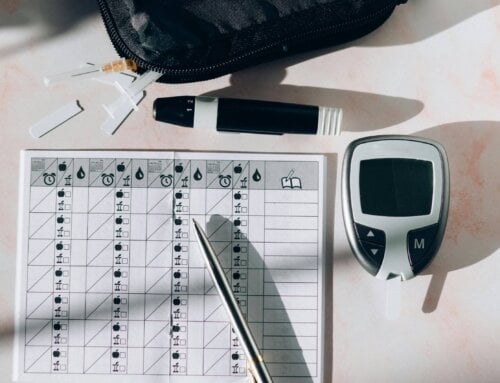If you have an upset stomach or nausea, you are not alone. Many people with diabetes also suffer from painful stomach issues. Learn more about a “diabetic stomach” and what you can do to start feeling better.
- Commonly referred to as “diabetic stomach,” the formal term for this condition is gastroparesis. Diabetes can alter peristalsis which is the normal contractions of the stomach and an intestine as food moves along in your digestive tract. In people with diabetes and gastroparesis, this movement slows down due to damage to the vagus nerve. This nerve regulates the digestive system and makes the muscles function. When it slows down food remains in the stomach longer. This can lead to nausea and vomiting and a full feeling after a small amount of food. Gastroparesis occurs most often in people with type 1 diabetes but can also occur in people with type 2 diabetes who have had diabetes for a long time.
- Other causes of gastroparesis include abdominal surgery with injury to the vagus nerve, viral infection, health conditions such as scleroderma or amyloidosis and the use of some medications including some antidepressants and narcotics. Symptoms of gastroparesis linked with diabetes include nausea, abdominal bloating, heartburn, vomiting, feeling full quickly after eating, weight loss and poor appetite.
- Slower stomach and intestinal movement can occur when your blood glucose levels are high. If your blood sugar is persistently high, it can damage the nerves that supply the stomach. This condition is called autonomic neuropathy and can worsen with gastroparesis. High, uncontrolled glucose is at the root of gastroparesis. Make sure to test your blood sugar regularly and report extreme highs to your health care team immediately. Maintain a healthy diet with whole grains, low-fat dairy, lean protein, fruits and vegetables.
- Certain foods can aggravate gastroparesis including chocolate, caffeine and fatty foods. These foods relax the valve between the esophagus and the stomach, making your symptoms feel worse. Stay away from these foods and talk to your doctor about ways to lower your blood glucose level. Consider including lifestyle changes, insulin and/or medication.
- Complications of gastroparesis include a lump in the stomach called a bezoar that can keep food from moving into the small intestine. The bezoar can also cause food to remain in the stomach which may lead to the growth of bacteria. Daily vomiting may occur in severe cases. Gastroparesis can cause other health issues for people with diabetes as the condition makes it difficult to consistently control blood sugar levels.
- A doctor performs a physical exam to diagnose gastroparesis. Tests used to diagnose the condition include a barium x-ray, barium beefsteak meal, gastric manometry, radioisotope gastric-emptying scan, electrogastrography, upper endoscopy and/or ultrasound. Typically treatments for gastroparesis in diabetes are used to manage the condition rather than cure it. Gastroparesis is a chronic, long-lasting condition that requires maintenance. Try to control your blood sugar levels to minimize discomfort. Talk to your doctor about adjusting your insulin, prescribing medications such as Reglan and having procedures such as gastric bypass surgery to see if they are a good choice.
- Control the symptoms of gastroparesis by staying away from fatty and sugar-laden foods. Instead of eating three meals daily, consume six small meals. Consider the texture of foods and make low-residue choices such as applesauce rather than apples with skin. Nibble on sugar-free desserts when you crave a sweet treat to avoid blood sugar spikes.
Lifestyle changes and medical advances can help reduce the symptoms of gastroparesis. Maintain stable blood sugar levels and steer clear of fatty and sugary foods. With some help from your health care team, you can ward off the symptoms of gastroparesis and live more comfortably.













Leave A Comment